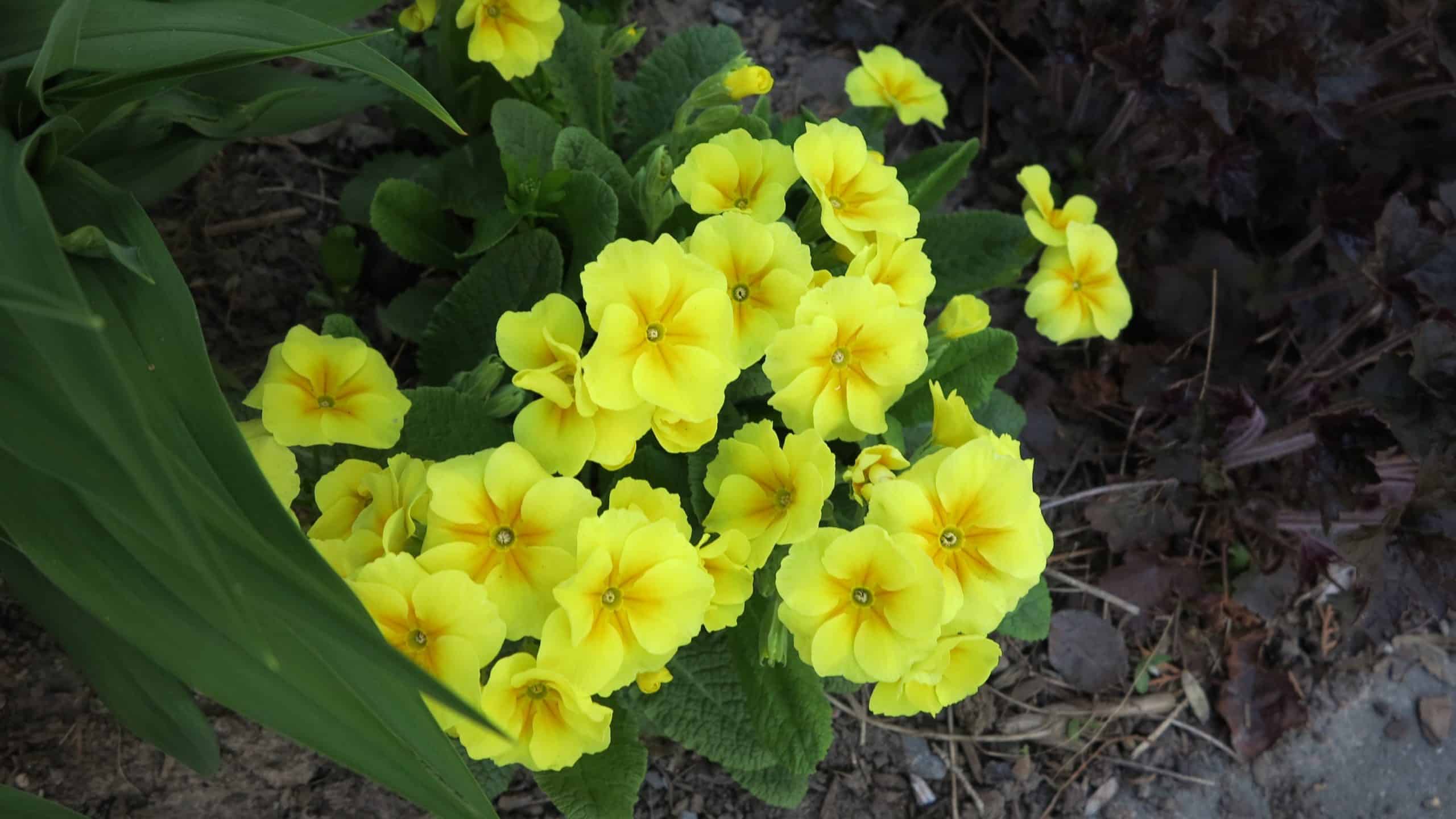In winter, I’m drawn to the small pots of colourful primulas offered in grocery stores and supermarkets. These cheerful flowers in bold primary colours are hybrid primulas with Primula acaulis, P. polyanthus and other wild species in their genetic background. Some have a sweet candy scent, a sure sign that species genes are prominent in their breeding. These primulas are grown from seed in greenhouses, and take 14 to 16 weeks to reach mature blooming size. Most are bought to be enjoyed indoors and then thrown away, which is too bad.

The little grocery store primulas are most comfortable in cool and bright conditions, with consistently moist soil (but not saturated) and temperatures around 10° to 20°C. By indoor living room standards, that’s too cool for many people. They soldier on as best they can in stuffy warm rooms, and sometimes in pots that haven’t been watered. Eventually the cluster of flower buds rising from the plants’ central crown wilts and gives up trying.
Removing the decorative wrapping or foil from the pots is important, as it often prevents proper drainage. Primulas want consistent moisture, but their soil must be free draining. By keeping them cool and in bright light, the flower buds will continue to rise from the centre, and the plant will bloom for several weeks. I keep mine on a cool windowsill at night and through the morning, and then shift them to the dining room table for the afternoon and early evening. Fertilizer isn’t necessary; the primulas have already been well fed and have set all their flower buds.
By mid-March, I usually have six or eight little primula pots hanging out on a cool windowsill, looking quite bedraggled. But I’ll keep them going and plant them in the garden in mid-April. Realistically, these aren’t hardy in my Zone 6a garden, but sometimes they do manage to hang on for a few years, and I’m always grateful to see their bright flowers peeking out with the daffodils in spring. The trick (and admittedly, it doesn’t always work) is to plant them in a sheltered position in light shade, where they’ll be protected from direct summer sunlight and heat, which can overwhelm them.
Primulas give so much pleasure, showing their diverse colours and forms from earliest spring through late summer — I’ve grown many of the hardier species, too. But there’s no way I’ll be pitching these little gems into the trash! They may have started out in the grocery store, but they’ll get their chance of making it in the real garden.









